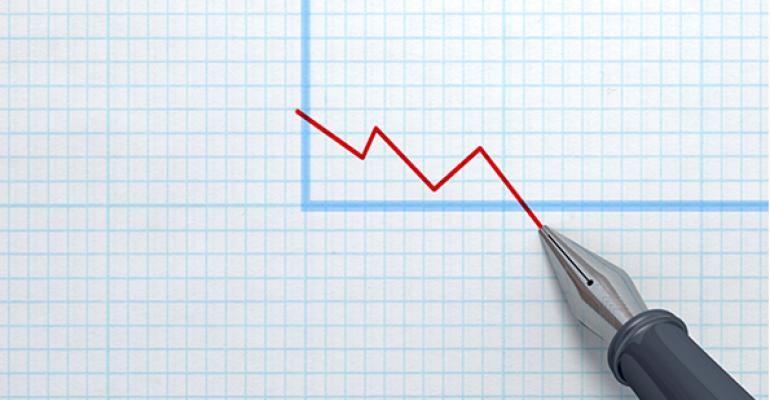Restaurant same-store sales decelerated in August to their lowest level in a year due to a drop in traffic at both quick-service and casual-dining restaurants, according to the latest MillerPulse survey.
Same-store sales rose 2.4 percent in the period — a 0.9-percent drop from July, and the first time all year that restaurants’ sales growth fell below 3 percent.
Traffic fell 0.9 percent in the month, the lowest level since April 2014.
The drop off in traffic came after traffic grew the previous two months, and despite lower gas prices and rising employment.
“It was a bit of a reversal in August,” said Larry Miller, co-founder of the survey. “But it’s nothing I’m particularly worried about.”
Same-store sales rose 2.2 percent at quick-service restaurants, the lowest rate since February of last year, and a drop of 150 basis points from July. Growth declined only slightly at casual-dining restaurants, to 1.6 percent, from 1.8 percent. The 0.6-percent gap between quick-service and casual-dining restaurants was the narrowest since March 2013.
Probably the biggest factor in the August slowdown was the calendar. Labor Day came late this year. The delayed holiday likely reduced some restaurant traffic, and therefore sales in late August faltered, contributing to the month’s slowdown.
Miller, in fact, said sales should bounce back when the numbers for September are released.
He also said the industry is starting to run into tougher comparisons. In the first half of 2014, for instance, same-store sales growth was typically under 2 percent each month, and frequently under 1 percent.
By the second half of last year, sales had accelerated. That acceleration is expected to make same-store sales growth more difficult in the latter half of the year. Miller expects 2.1-percent growth in the fourth quarter of this year, but that would still yield 3.1-percent growth for the full year.
“It’s been a pretty good year,” Miller said. “But comparisons are taking toll on sales.”
Two other factors could explain the month’s slowdown. For one thing, the stock market was volatile during the month. That might have led a few consumers to reduce their restaurant spending in the period.
But, Miller said, “It would take a lot more than a few weeks of market volatility to have a lasting impact on restaurant spending,” he said. “But make no mistake, if equity values were to decline and we have a bear market, that would have some impact on the margins on spending.”
Another potential factor: Consumers might be growing tired of price hikes.
Restaurant traffic has been modest at best for much of the past few years — the traffic decline was the fifth in the past seven months, according to MillerPulse. Much of the recent improvement in same-store sales has come from higher prices. Chains have raised prices to offset higher food and commodity costs.
“How long can you continue to run negative traffic plus 2.5 percent to 3.5 percent sales growth?” Miller said. “How long can average check drive growth in comp store sales? The answer is not long.
“The consumer has said the past several months that they’re willing to spend more money when they go out. Now we’re starting to see the first chink in the armor. They may be pulling back at the margins.”
Contact Jonathan Maze at [email protected]
Follow him on Twitter: @jonathanmaze





